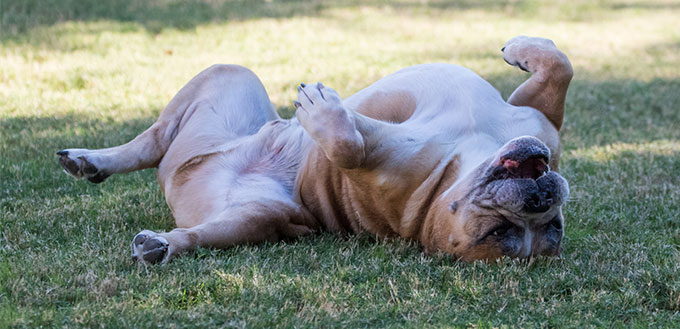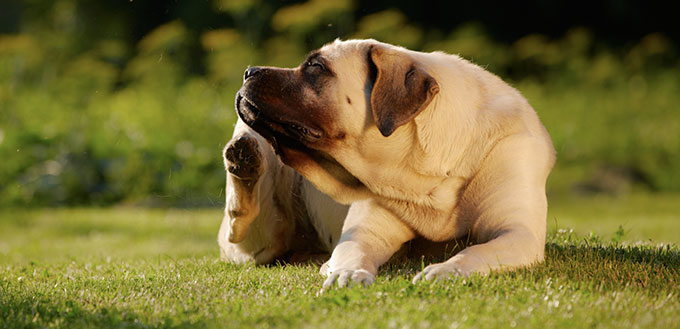When you spot an unusual mark on your precious pooch’s skin it can be very distressing. It is natural to panic and assume the worst, but it may not be as bad as you think. It could simply be a blackfly bite and this is highly unlikely to cause any long-term health problems.
In the warmer months, dogs love to spend time outside but unfortunately so do flies. Vets are inundated with calls from worried dog Mom and Dads who have spotted new marks and blemishes on their dog’s skin. The most common insect bites for dogs are those caused by gnats and black flies. These insects emerge around May or June and are around for about a month. So, if you suspect that your pooch has a fly bite, what should do? Read on to find out more.
Basic Facts About Black Fly Bites on Dogs
Black flies love to hang around your dog’s ears and nose because it is hard for a dog to protect these areas and the skin is exposed and soft. Fly bites on a dog’s belly are also very common because the hair is sparse.
Dogs who work on farms or who spend a lot of time outdoors are more likely to get bitten by flies. It is also true that larger dogs are more at risk. If you have a small breed dog, this is unlikely to be an issue for you. The same is true if your dog spends most of their time inside your home. Breeds with large, upright ears such as the German Shepherds and Collies and who work outside all day are especially at risk.
Flies like dogs! This is because they are warm-blooded and provide a fresh meal for insects. If the dog’s coat is contaminated with fecal matter, flies find it even more attractive! An open skin wound is a great place for flies to lay eggs. Matted fecal matter in the dog’s coat may attract flies. If you live next to a farm or a stable, there will be more flies around to bother your poor pooch.
Black Fly Bites Dog Symptoms
Black fly bites dog symptoms can be variable. Often you will see small red bumps on the edges of your dog’s ears or on their belly. They can become dark and crusty and will sometimes start to bleed. Your dog may scratch them and you may even notice some flies still present on the skin. Most marks only last around 48 to 72 hours. They get better by themselves and do not cause any distress to the dog. The best advice is to monitor the bites for a few days. If they have not resolved within five days or if your dog develops other symptoms such as fever, lethargy or loss of appetite, go and see your vet.
The main concern is that the wound can get a secondary infection. If the fly has laid eggs in the wound, your dog will probably need surgery to remove them so you must consult a vet. In rare cases, severe bites that have become infected can cause scarring. Secondary bacterial infections have to be treated with antibiotics from your vet because they can spread.
Bites can also be caused by stable flies, horse flies, mosquitoes, sand flies and biting midges.
Preventing Black Fly Bites in Dogs
A common question for vets to be asked is ‘How do I keep flies from biting my dog?’. There is plenty that you can do. Flies will always be attracted to refuse, pee, poop, and still water. Therefore, think about where you locate your kennels and be very careful about hygiene.
Related Post: Dog Crates
Remove any leaves and grass clippings from your yard. Keep the kennel and the surrounding area scrupulously clean by removing uneaten food and poops straight away. Groom your dog to keep their coat in the best condition and bathe them if they get very messy. You may need to clip matted fur. It is sensible to keep your dog inside during the peak fly season. However, if your dog does have to go outside, invest in a good fly repellent for dogs.
You may also want to protect your dog’s ears with a petroleum product. Many owners like to use Neosporin which acts as a useful barrier. There are also several commercial pyrethrin products which can be used to deter flies from kennels and yards and dogs. Some owners add a fly repellent for dogs or an insecticide or deet product to the petroleum product.
You could use a repellant to spray your dog’s kennel to further deter flies but check that it is safe for use around animals. You may prefer to use a bug zapper to electrocute them. Fly tape is another option but must be hung up high so that it does not get stuck to your dog’s coat.
Treatment of Fly Bites in Dogs
Most of the time, dog owners are perfectly capable of diagnosing and treating a black fly bite themselves. There is no need to panic. However, if your dog seems to be especially bothered by the bites or is generally unwell, you must see a vet. You must also go and see your vet if the bites do not resolve in a few days or if your four-legged friend has multiple bites. Open wounds with maggots and obvious infections always need treatment by a vet.
There are several home remedies available for black fly bites and it may be worth you keeping some dog fly biting treatment in your house so it will always be available. You need to be very careful about how you apply it and always read the instructions carefully.
It often helps if you clean the affected area gently with warm water and mild soap. Whilst the bites are still fresh, it is best to keep the dog inside.
Sources:
- Carol McCarthy, Shoo-Fly: How to Keep Flies Off Dogs, PetMD
- Tammy Hunter, DVM, Insect Bite Reaction in Dogs, VCA Hospitals
- Fondati, A, Leishmaniasis Prevention: What Should Be Known Before Recommending A Topical Product Against Sand Fly Bites In Dogs?, CAB International
More Pet Product Reviews
Flea Collars For Dogs
Flea Treatments For Dogs
Dog Joint Supplements
Dog DNA Tests
Fish Oil For Dogs
Coconut Oil For Dogs
Probiotics For Dogs
CBD Oil For Dogs
Dog Dewormers
Dog Flea Combs









